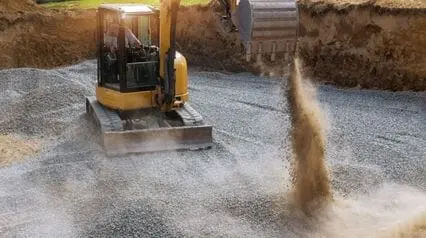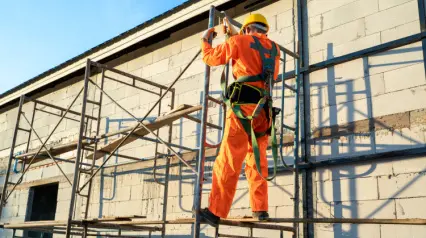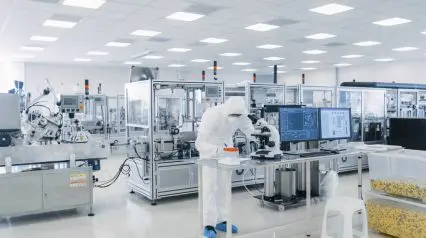What is Backfilling?
Backfilling is the process of filling in the excavated area around a foundation or structure. The backfill material can be anything from soil to gravel and is usually compacted to provide support and stability. Backfill can also be used to insulate foundations or improve drainage. This means that backfilling is essential in the construction process, following the foundation’s pouring and installing utility lines.
Depending on the project, backfilling can be a simple or complex operation requiring special equipment. It is vital to ensure that the backfill material is compacted correctly to provide a stable foundation.
Factors Affecting Backfilling in Foundation
Several factors need to be considered when backfilling a foundation. Below are some of the most critical factors:
Choosing the Right Backfill Material
The backfill material must be appropriate for the job. Soil, sand, gravel, and crushed stone are all common backfill materials. The type of material will vary depending on the application. As an example, crushed stone can improve drainage around foundations.
Compacting the Backfill Material
The backfill material must be appropriately compacted to provide a stable foundation. Hand tampers, plate compactors, or roller compactors can be used for this process. The equipment used for compacting differs based on the material’s size and type.
Period of Backfilling
The backfill material must be placed in the excavation layers and compacted after adding each layer. Depending on the material, each layer will have a different thickness.
Generally, the soil should be placed in layers 6 to 12-inch-thick and compacted with a hand tamper or plate compactor. Gravel and sand can be placed in 3 to 6-inch-thick layers and compacted with a hand tamper or roller compactor. The crushed stone should be placed in 2 to 4-inch-thick layers and compacted with a hand tamper or plate compactor.
Create Your Own Backfilling Safety Checklist
Eliminate manual tasks and streamline your operations.
Get started for FREETypes of Backfilling in Foundation
Based on the type of material used, backfilling can be classified into the following types:
Coarse-Grained Soil
Coarse-grained soils include gravelly and sandy soil types and clayey sands through gravel-sand mixtures with little or no fines. These soils are relatively easy to compact.
Fine-Graded Soils Of Low To Medium Plasticity
Organic clays of low to medium plasticity (such as gravelly, sandy, or silty clays and lean clays), silts (including organic and inorganic silts), and fine sands (such as silty fine sands or clayey silts) are all examples of fine-grained soil.
Commercial By-Products
Using commercial by-products, such as furnace slag or fly ash as backfill material, may be desirable when natural materials are unavailable. Fly ash can be used as a lightweight backfill behind a 25-foot-high wall. It can also be mixed with clay to make it more plastic.
The suitability of these materials depends on how well they meet the foundation’s needs and the products’ engineering characteristics.
Controlled Low-Strength Material (CLSM)
CLSM is a cementitious material used as backfill, void fill, and utility bedding. Fly ash, cement, and other similar products make up the mixture. The fly ash mixture can come from thermal power plants.
Tips in Backfilling
- You must wait at least five to seven days before backfilling a foundation. Even if you backfill immediately, cracks may develop.
- Before the fill is applied, there must be no grass, loose stones, or rubbish on the surface. If the area has water, it should be pumped or bailed out.
- Determine the materials you’ll utilize for your foundation backfill. Mixed materials often include rocks, soil, and stones. Some dirt can retain too much moisture and is thus unsuitable for your foundation.
- Try to use the excavated earth as a filling material.
- Once the accepted excavated material has been stored, it must be cleaned of rubbish, significant stones, vegetation, and other items.
- Backfill at the corners and ensure the soil distribution is uniform to give your property solid lateral support.
- Using an excavator, fill in twelve inches of mixed materials on the sides of the area. Compress the soil and stone after that. You must continue to backfill until the entire area is filled, repeating the process until all of it is completed.
- Fill the space in layers; each layer should be 15cm to 20cm thick.
- Each layer is trampled and compacted with big wooden logs or steel rammers.
- Never fill in plinths and footing pits with black cotton soil.
FAQs About Backfilling
The main difference between filling and backfilling is that filling adds new material to an excavation, while backfilling is the process of refilling an excavation. Meaning, backfilling is usually done at the end of a construction project, while filling is often done throughout the project to keep the excavation stable.
Backfilling happens after the foundation has been constructed and the concrete has had time to cure. This process usually takes 5-7 days after pouring the concrete. The backfill process helps to ensure that your property has a sturdy foundation by filling in any voids around the perimeter of the foundation.
The coarse-grained soil is the most popular option. It is a blend of gravel, sandy soil, and just enough fine materials. You want soil that will allow for proper drainage and will not expand or contract too much with changes in moisture. Because it offers excellent foundation support while being easily compacted, this is a high-quality backfill.
Backfill must be deposited in horizontal layers that are no more than 200 mm thick. Before adding the next layer, each layer should be tamped down and compacted using mechanical tampers. The layers should be as level as possible to promote even compaction.




